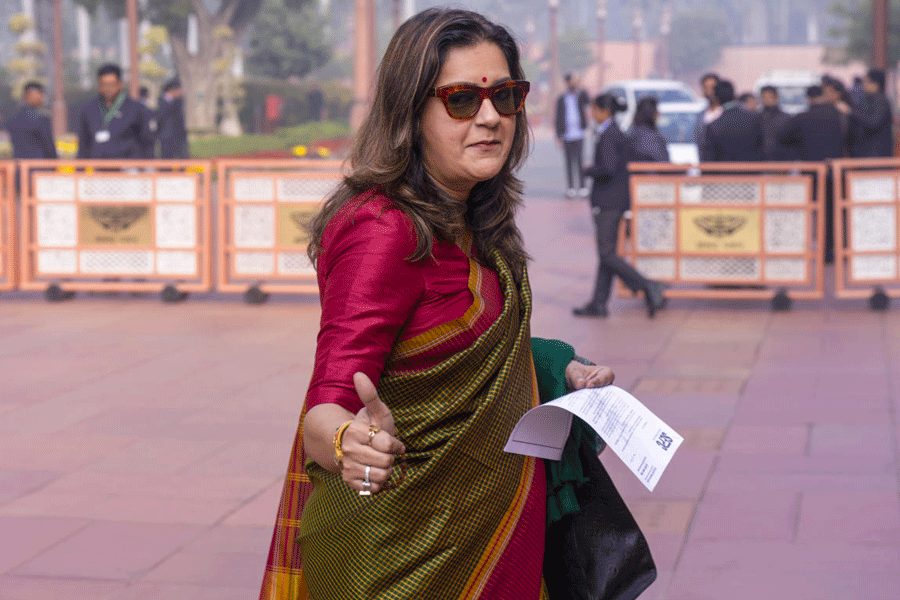As always, the battle over healthcare schemes has begun before elections. However, political parties tend to forget or intentionally ignore the importance of universal healthcare coverage. A year before the 2019 Lok Sabha election, the Bharatiya Janata Party announced the PMJAY-Ayushman Bharat scheme, an insurance scheme that provides coverage of five lakh rupees per year for secondary and tertiary care with numerous riders for the selection of target populations in rural and urban areas. The National Health Authority came up with a circular, which fixed parameters as per the Socio-Economic and Caste Census, 2011. This led to the imposition of severe restrictions on universal access to healthcare. Households possessing automobiles, members with a government job or monthly incomes above Rs 10,000 or non-agricultural enterprises registered with the government are excluded from the scheme. These conditions have led to the exclusion of a vast section of the population.
The West Bengal chief minister, Mamata Banerjee, had announced the Swasthya Sathi scheme ahead of the 2016 assembly elections. Now, before this year’s assembly election, she has extended its scope to include all citizens of the state. Initially, SS was an insurance-based scheme. But recently, the government made it clear that it will not involve any third party and that it would transfer the amount directly to the insured. The transition from insurance to assurance may have been necessitated by the changing electoral atmosphere.
The basic difference between PMJAY and SS is in the coverage of the population. The latter seeks to cover the entire population of Bengal, whereas PMJAY only covers 50 crore people in India. In SS, the state government will bear the entire expenses whereas in PMJAY the costs are split in a 60-40 ratio between the Centre and the state with some exceptions. While SS is an assurance-based model, PMJAY is insurance-based. In SS, a single card suffices for every member of the family while in the case of PMJAY each family member would have an individual card (chargeable at Rs 30 per printout). The Bengal government has also empowered women of each household by issuing the SS card in the name of the female head of the family, but PMJAY has no such provision. Another important feature of the SS card is that it can be used in Vellore, Tamil Nadu, where a significant number of Bengalis go for secondary and tertiary care.
The SS’s fortune will now depend on how Banerjee’s government manages the private sector. Already, there have been several incidents of private hospitals rejecting SS card-holder patients, saying that the rate of several treatments under the SS scheme was too low. In a public meeting in Ranaghat, Nadia, the chief minister had warned private hospitals that refusal of treatment could lead to the cancellation of their licences. But given their impudence, controlling private sector hospitals could pose a challenge for Banerjee’s government. The history of such insurance-based schemes has been rather chequered in India. For example, Andhra Pradesh’s Rajiv Aarogyasri Community Health Insurance scheme, which sought to provide quality healthcare to the poor, failed because insurance companies and private hospitals ripped off the government by allegedly faking bills and performing unnecessary operations. Bengal’s private hospitals cannot claim to have a pristine record either.
However, the question is this. If governments are ready to spend huge sums to fund secondary and tertiary care, why cannot they spend the same amount to create the infrastructure necessary for universal healthcare? The latter can help families reduce their out-of-pocket expenditure on OPD care — excluded in both PMJAY and SS — which is the most common reason for visiting a hospital. The Covid-19 pandemic has also exposed the cracks in our healthcare infrastructure: neither insurance nor assurance model is in a position to repair them.
Over the years, public healthcare and its inherent values have been systematically dismantled by corporations. The State, for the most part, has been an apathetic bystander, if not an accomplice. Health is primarily the responsibility of the State. It must be noted that every time an individual avails of the benefits of these schemes, taxpayers’ money goes into private hands. Governments as well as citizens would be better served by channelling funds into improving the healthcare system in a meaningful way.











